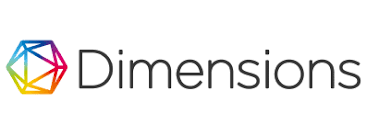STRATEGI PENGEMBANGAN USAHA PEMBIBITAN SAPI POTONG PADA P4S CAHAYA PURNAMA DESA TEPIAN BARU KECAMATAN BENGALON KABUPATEN KUTAI TIMUR
(1) Sekolah Tinggi Pertanian Kutai Timur Jln. Soekarno Hatta No.1 Sangatta Utara Kutai Timur, Kalimantan Timur 75611, Indonesia
(*) Corresponding Author
Sari
The purpose of this study was to analyze the development strategy of breeding beef cattle in P4S Cahaya Purnama Bengalon East Kutai. This study was conducted in May 2016. The research was conducted at the Center for Agricultural Training, Rural, and Governmental (P4S) Cahaya Purnama Bengalon. The research data were collected in the form of primary and secondary data. Besides, it also conducted in-depth interviews with several informants (Mantra, 2008). The method used is qualitative survey and analyzed descriptively. In addition, this study also use the method of literature related to supporting data. In developing P4S, Ministry of Agriculture of the Republic of Indonesia has issued guidelines for the growth and development of P4S (MOA RI, 2007). In these guidelines has been described in detail how the goals established by monitoring P4S. P4S New Light has been directing its activities on the concept of integrated agriculture and animal husbandry. Activities already underway that is how the activities of cattle breeding which produce manure and used as fertilizer, will then be used to fertilize crops and plantation there. SIDA strategy can also be applied to the activities of breeding cattle in P4S Cahaya Purnama. SIDA strategies can be unified with the concept of agribusiness. In East Kutai, agribusiness breeding and fattening beef cattle can be the right choice. Enterprises beef cattle breeding activity in the P4S Cahaya Purnama already running and developed quite well. The concept of agribusiness strategy that incorporates the agricultural and plantation sectors are very worthy recommended for development P4S Cahaya Purnama.
Kata Kunci
Teks Lengkap:
PDFReferensi
Daniel M., Darmawati dan Nieldalina. 2005. PRA (Participatory Rural Apprasial): Pendekatan Efektif Mendukung Penerapan Penyuluhan Partisipatif dalam Upaya Percepatan Pembangunan Pertanian. Bumi Aksara, Jakarta.
Elly, F.H., P.O.V. Waleleng, Ingriet D.R. Lumenta, dan F.N.S Oroh. 2013. Introduksi Makanan Ternak Sapi di Minahasa Selatan. Journal of Tropica Forage Science 3(1):5-8.
Firman, A., dan Tawaf R. 2008. Manajemen Agribisnis Peternakan : Teori dan Contoh Kasus. UNPAD Press, Bandung.
Gunawan, A. & Jakaria. 2011. Genetic and Non-Genetics Effect on Birth, Weaning, and Yearling Weight of Bali Cattle. Med. Pet. 34(2):93-98.
Handayani, W., Mada S., & Umi N. 2013. Kajian Roadmap Pengembangan Sistem Inovasi Daerah (SIDa) Kota Semarang. Riptek Vol. 7, No.2, Hal : 97-108.
Mantra, I.B. 2008. Filsafat Penelitian dan Metode Penelitian Sosial. Pustaka Pelajar, Yogyakarta.
Parakkasi, A. 1999. Ilmu Nutrisi dan Makanan Ternak Ruminan. UI Press. Jakarta.
Permentan. 2014. Pedoman Penilaian Pusat Pelatihan Pertanian dan Perdesaan Swadaya Berprestasi. Jakarta: Kementerian Pertanian Republik Indonesia.
Pusat Pengembangan Pelatihan Pertanian. 2007. Pedoman Penumbuhan dan Pengembangan Pusat Pelatihan Pertanian dan Pedesaan Swadaya (P4S). Jakarta.
Rusnan, H., Kaunang Ch.L., dan Yohanes L.R.T. 2015. Analisis Potensi dan Strategi Pengembangan Sapi Potong Dengan Pola Integrasi Kelapa-Sapi di Kabupaten Halmahera Selatan Provinsi Maluku Utara. Jurnal Zootek 35(2):187-200.
Santoso, U. 2015. Pengembangan Peternakan Terpadu Berwawasan Agribisnis dalam Rangka Mewujudkan Ketahanan Pangan. Diakses 27 April 2016, dari https://sivitasakademika.wordpress.com/2015/03/30/pengembangan-peternakan-terpadu-berwawasan-agribisnis-dalam-rangka-mewujudkan-ketahanan-pangan/
Saragih, B. 1998. Kumpulan Pemikiran Agribisnis : Paradigma Baru Pembangunan Ekonomi Berbasis Pertanian. Yayasan Persada Mulia Indonesia.
DOI: http://dx.doi.org/10.31602/zmip.v43i1.1064
Refbacks
- Saat ini tidak ada refbacks.
##submission.copyrightStatement##
This work is licensed under a Creative Commons Attribution 4.0 International License.




